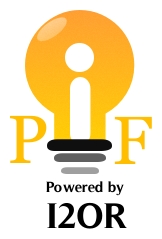Use of Chelate Zinc in Vermiculture |
| ( Volume 6 Issue 2,February 2020 ) OPEN ACCESS |
| Author(s): |
I. Beshkenadze, N.Zazashvili, M. Gogaladze, N. Klarjeishvili, M. Chikaidze, O. Lomtadze, L. Gogua |
| Abstract: |
|
The impact of glutamine acid (GlH2)-containing chelate zinc on earthworms’ protein mass and the degree of cocoon reproduction is studied, and the effect of different external stress-factors: inundation, substrate quality and chelate zinc toxic doses on earthworms is established, as well. For this purpose, an experiment was conducted according to one and the same pattern by four options. Four groups (one control and three test ones with maximum (Max), normal (Norm.) and minimum (Min.) doses in grams) were composed for all options. Each of them has three repetitions. 5 earthworms of roughly equal mass were selected for each repetition. Weighing and cocoons’ counting was made in three stages, on the 21st, 31st and 41st day since the start of the experiment. Earthworms’ mass gain was registered in all groups throughout the course of test in the first option of the experiment. At that, mass gain degree in all test groups was quite high compared to the control one and reached the maximum in II test group – 108.6%. Reproduction growth degree compared to control group was higher in all test groups and reached the maximum in I test group – 152.9%. Based on the analysis of obtained results the optimum and effective dose of chelate zinc is established and it equals to 0.0269g. per 300g. of substrate. When studying external stress factors – inundation (second option) and poor-quality substrate (third option), on the basis of conducted studies an enhancement of resistance of earthworms treated with chelate zinc to different external stress factors is established. All earthworms of all three repetitions of the control group died, while in the test group – only part of them. On the basis of experiment conducted on earthworms (fourth option) treated with chelate zinc one can draw conclusion that they are quite sensitive to high doses of microelements, earthworms of all test groups died, while all five earthworms of all repetitions of the control group were alive. Thus, earthworms can be successfully used as toxicity biotests, and that is very important due to cheapness and simplicity of this method. We suppose that obtained results are of great importance for agriculture, particularly in vermiculture, since earthworms breeding and use of this renewed bioresource for obtaining high-quality vitamin-proteinic feed premixes in poultry, animal farming and fishing is one of its important direction. |
 DOI :
DOI :
|
| Paper Statistics: |
| Cite this Article: |
| Click here to get all Styles of Citation using DOI of the article. |
 Click Here for
Click Here for Track Your Paper

 Call for Paper
Call for Paper
